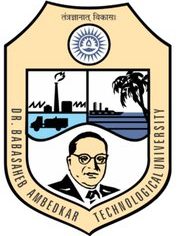Department of Chemistry
- About Department
- Faculty and Staff
- Various Committees
- Publications
- Research
Department of Chemistry was established in the year 1989 with B. Tech programs in various fields of Engineering and Technology. Department is having experienced and dedicated faculty members. Their contribution towards academic and other activities add beneficial values for the department. Laboratory is well equipped with state-of-art analytical equipments such as Chemical Oxygen Demand (COD), Dissolved Oxygen setup, Gas Chromatography, UV- Visible Spectrophotometer, Photo reactor etc. Apart from the academic work,department is also engaged in research by offering Ph.D. programs in Chemistry since 2003. Department has published good numbers of research papers in the reputed journals in the area of Photocatalyst, Environmental Chemistry, solid state chemistry, Phytochemistry etc.
Vision: To achieve academic and research excellence in the multidisciplinary areas of Chemical Sciences and Technology.
Mission: To impart the basic and advanced knowledge of Chemistry and their applications in the Multidisciplinary fields of Science and Technology.
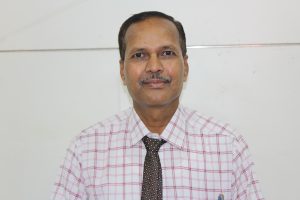
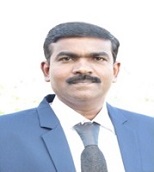
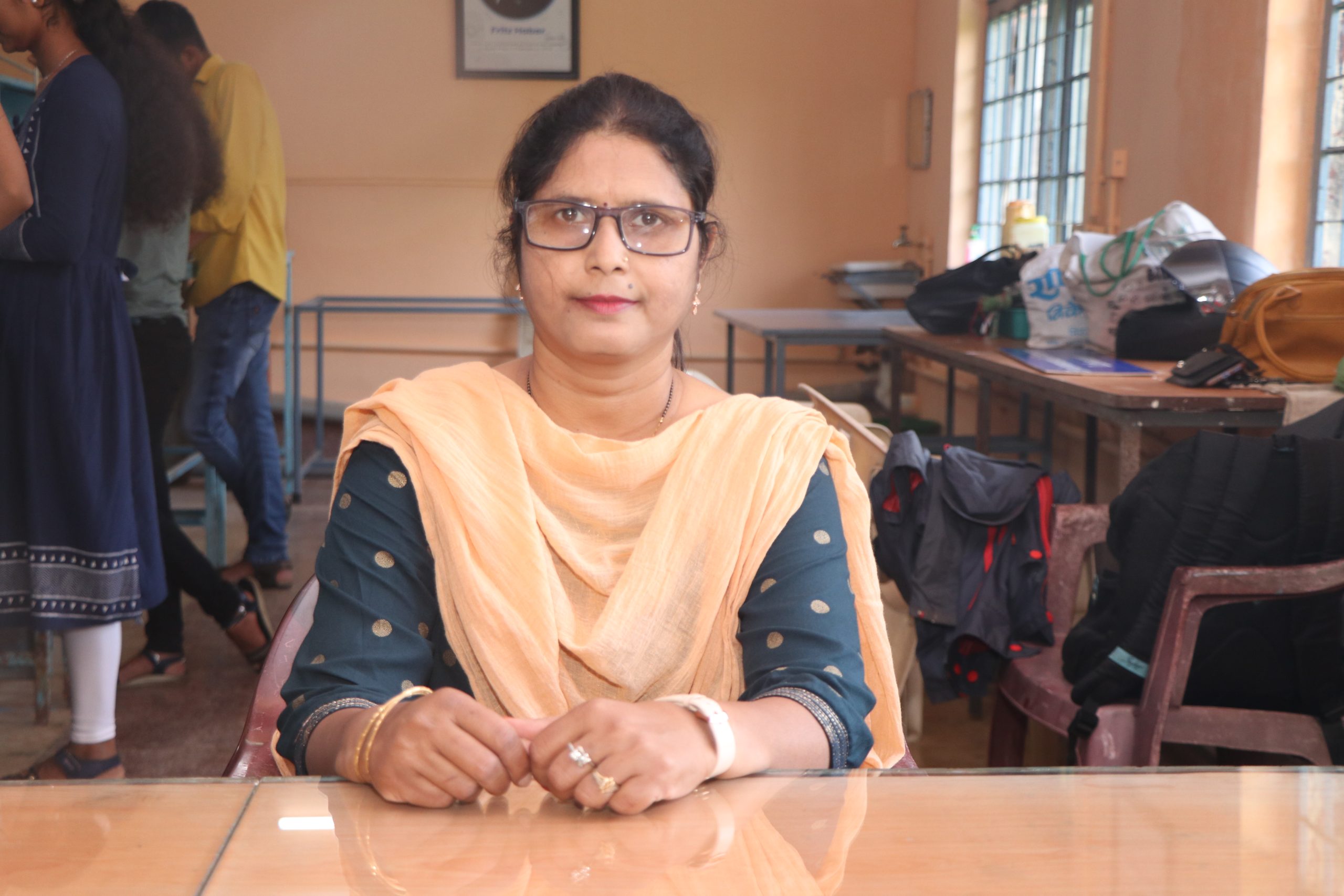
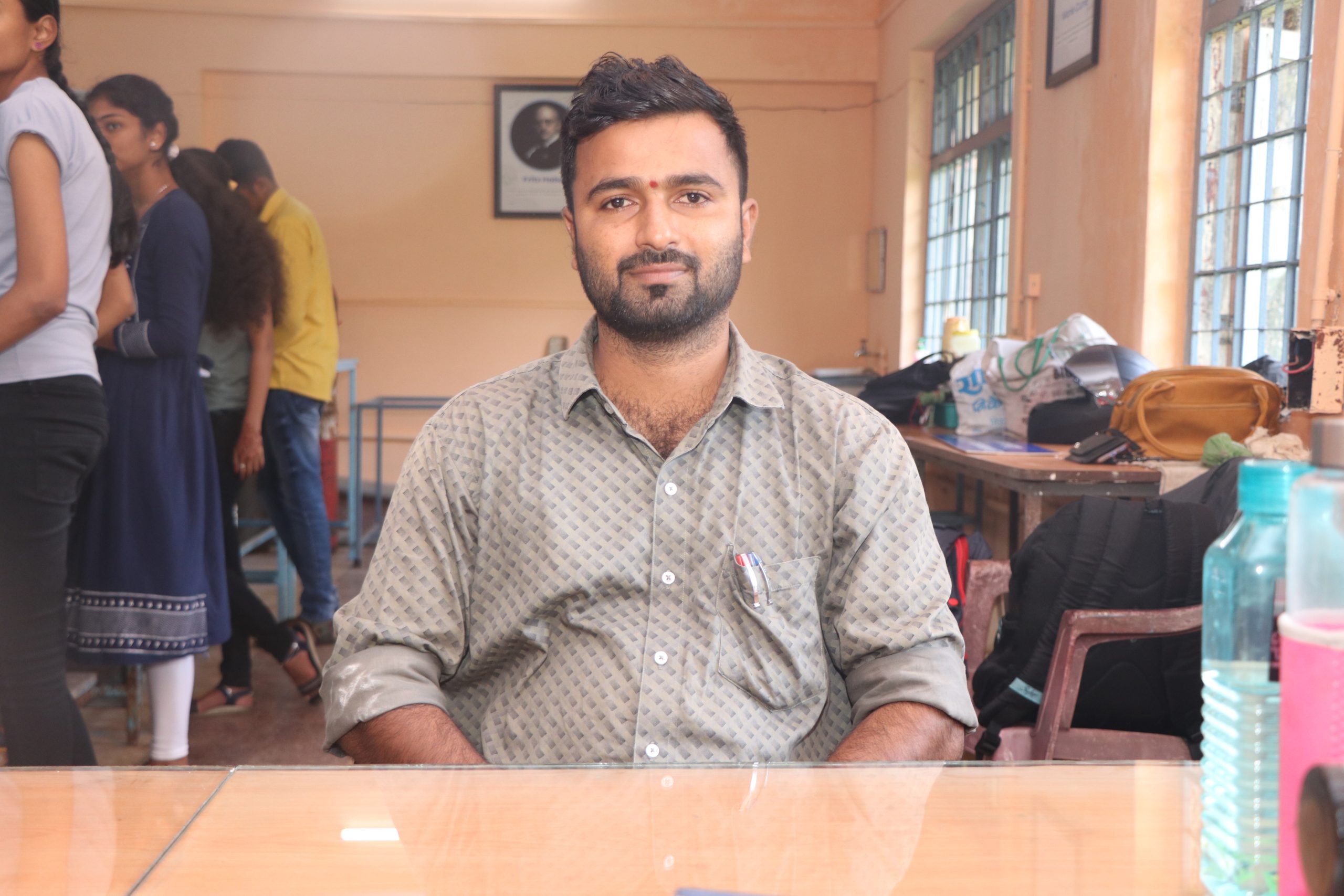
Laboratory Assistants
Mrs. C.D. Sutar
Mrs.Dhanashree Kadam
Board of Studies in Chemistry (BoS):
Board of Studies in Chemistry have been constituted for the formation of curriculum for UG & PG programs in which Chemistry subjects are included and any other decision related to academic will be taken as per the guidelines of the University from time to time.
- Dr.P.B.Lokhande, Professor and Head Chairman
- Dr.H.A.Mujawar, Professor
- Dr. S.D.Tupare, Associate Professor , Department of Chemistry, KES College Nagothane , Raigad
- Dr. Nitin Bhole, Associate Professor , Department of Chemistry, Godavari Collage of Engineering , Jalgaon
- Professor Arun Isloor, Head, Department of Chemistry, NITK, Surathkal
Research Progress Assessment Committee (RPAC):
Research Progress Assessment Committee is constituted for the selection of Ph.D Scholars, for assessing research progress of the students, assessing Pre-Synopsis seminar,assessing examiner’s Reports and recommending the Ph.D thesis Viva-Voce Examination.
- Dr. P.B.Lokhande , Professor and Head Chairman
- Dr.H.A.Mujawar, Professor Member
- Dr. S.G.Dahotre, Professor Member
- Dr. Sonali Mhatre , Assistant Professor Member
- Dr. A.R. Chavan , Associate Professor Member
Departmental Research Committee (DRC):
The DRC in Chemistry have been constituted for the admission procedure for the Ph.D Programs further DRC will look after the decision taken in the RPAC
- Dr. P.B.Lokhande , Professor and Head Chairman
- Dr.B.B.Singh , Professor,Member
- Dr. S.G.Dahotre, Professor, Member
Departmental Purchase Committee (DPC):
For the smooth functioning of the laboratory practicals and to carry out research activities, the department needs to purchase consumable items and equipments etc. For that purpose,the department has constituted DPC to propose and verify the specifications.
- Dr. P.B.Lokhande , Professor and Head Chairman
- Dr..H.A.Mujawar, Professor Member
- Dr. S.G.Dahotre, Professor Member
Dr.H.A.Mujawar
Citations:179
h-index:8
i10-index:7
Dr.P.B.Lokhande
Citations: 116
h-index: 6
i10-index:3
- Electrodeposition of Bi-based alloyed film and their possible use in the superconductors.
S. H. Pawar, H. A. Mujawar and et. al.
Bulletin of Electrochemistry.
Vol. 06 (1990) 315—317 - Preparation of MgO substrate for superconducting films.
S. H. Pawar, H. A. Mujawar and et. al
Materials Research Bulletin.
Vol. 25 (1990) 503-508. - Electrodeposition of Bi-Sr-Ca-Cu alloyed films from non-aqueous bath.
S. H. Pawar and H. A. Mujawar
Materials Research Bulletin.
Vol. 25 (1990) 1443-1451 - Role of complexing agents in electrodepostion of Bi-Sr-Ca-Cu alloyed films.
S. H. Pawar and H. A. Mujawar
Materials Letters.
Vol. 10 (1991) 355-360 - Mechanism of Electrodeposition of Bi-Sr-Ca-Cu alloyed films.
S. H. Pawar and H. A. Mujawar
Materials Chemistry and Physics.
Vol. 28 (1991) 259-266. - Electrodeposition of Sr-Ti alloyed films from an aqueous bath.
S. H. Pawar, P. N. Pawaskar and H. A. Mujawar
Materials Chemistry and Physics
Vol. 36 (1994) 235-240 - Study of physicochemical parameters of surface water in the Mahad Industrial Area.
A. D. Gawas, P. B. Lokhande and H. A. Mujawar
Journal of Pollution Research
Vol. No. 25 (01) 109-114 (2006) - Study of Physico-chemical Parameters of Surface Water from Kundalika River Near Roha MIDC, Raigad
N. J. Patil, D. B. Patil, P. B. Lokhande and H. A. Mujawar
Indian Journal of Environmental Protection 26 (2) 169-174 (2006) - Multivariate statistical analysis of ground water in the vicinity of Mahad industrial area of Konkan region, India
P. B. Lokhande, V. V. Patil and H. A. Mujawar
International Journal of Applied Environmental Sciences, Volume 3 Number 2 (2008) pp. 149-163 - Multivariate statistical study of Seasonal variation of BTEX in the surface water of Savitri River
P. B. Lokhande, V. V. Patil, Dr. H. A. Mujawar
Environmental Monitoring and Assessment (Springer) 157 (1-4), 51-61 - Study of metal contamination in Savitri River by Multivariate Statistical Analysis
P. B. Lokhande, V. V. Patil, H. A. Mujawar
Indian Journal of Environmental Protection
Vol. 29 No-02(2009) pp 159-166 - Assessment of seasonal variation in surface water quality of Savitri River, India by using multivariate statistical techniques
P. B. Lokhande, V. V. Patil and H. A. Mujawar
Asian Journal of water, Environmental and pollution 8 (2), 105-112 - Characterization of waste water by correlation and regression method
A. D. Gawas, P. B. Lokhande and H. A. Mujawar
Indian Journal of Environmental Protection 27 (12): 1117-1120 (2007) - Study of water quality parameters of River water in Konkan Region A. D. Gawas, P. B. Lokhande and H. A. Mujawar Indian Journal of Environmental Protection Vol. No. 25(03) 212-217 (2005)
- Study of Physico-chemical Parameters of Surface Water from Kundalika River Near Roha MIDC, Raigad N. J. Patil, D. B. Patil, P. B. Lokhande and H. A. Mujawar Indian Journal of Environmental Protection 26 (2) 169-174 (2006)
- Evaluation of Ground Water Quality of MIDC Area, Roha through Water Quality Index Assessment S. M. Tandale, H. A. Mujawar, P. B. Lokhande. International Journal of Scientific and Engineering Research, Vol 5(4), April 2014
- Comparative Study of Efficiency of Cd and Sr doped ZnO Photocatalyst Synthesized by Mechanochemical Method and Coprecipitation Method Sneha S. Salvi, Dr. P. B. Lokhande, Dr. H. A. Mujawar, Journal of Interdisciplinary and Multidisciplinary Research, July 2017, 11(7)
- Photodegradation of Rhodamine 6G dye by Cd, Sr Doped ZnO, Synthesized by Mechanochemical Method Sneha S. Salvi, Dr. P. B. Lokhande, Dr. H. A. Mujawar Advances in Intelligent Systems Research, Atalntis Press , Vol. 137, Pp. 48-53
- Photocatalytic degradation of carcinogenic rhodamine 6g dye by strontium and tin doped cadmium sulphide nanoparticles, Madhuri M. Bhagat, Dr. P. B. Lokhande, Dr. H. A. Mujawar, International Journal of Research Publications in Engineering and Technology, [IJRPET] ISSN: 2454-7875 VOLUME 3, ISSUE 6, Jun.-2017, 129-136
- Study of Zr and Sn doping on photoluminescence Property of Cadmium Sulphide.Madhuri M. Bhagat, P. B. Lokhande, H.A. Mujawar Advances in Intelligent Systems Research, Atalntis Press, Vol. 137, Pp. 54-58.
- Essential Oil Extraction, Charactarization and Antimicrobial Study of CythoclinePurpurea DC from Konkan Region Mr. Abhijit V. Dinde, Dr. P. B. Lokhande, Dr. H. A. Mujawar Journal of Pharmacy Research 2017, 11(5), 424-429, ISSN: 0974-6943
- Effect of Cd, Ni codoping on Photocatalytic activity of Zinc Oxide, Synthesized by Citrate Gel Method Sneha S. Salvi, Dr. P. B. Lokhande, Dr. H. A. Mujawar International Journal of Research in Advent Technology, Vol. 5, No. 11, November 2017.
- Essential oil extraction, characterization and antimicrobial study of BlumeaLacera D.C. from Konkan Region Mr. Abhijit V. Dinde, Dr. P. B. Lokhande, Dr. H. A. Mujawar Journal of Pharmacy Research Vol. 12 (1) 2018, ISSN: 0974-6943.
- Graphic interpretation and assessment of water quality in savitri river basin. Dr. P. B. Lokhande, Dr. H. A. Mujawar International journal of scientific and engineering research Vol. 7(3), March 2016
- Effect of Tin and Strontium Doping on the Photocatalytic Activity of ZincSulphide Nanoparticles for the Photocatalytic Degradation of Resorcinol underSolar and Ultra-Violet Light,Bhagat M. M., Lokhande P., Mujawar H.A,jNanosciCurr Res 2018, Vol 3(2): 2 ,ISSN: 2572-0813, DOI: 10.4172/2572-0813.1000121
- “Essential Oil Extraction, Charactarization and Antimicrobial Study of BlumeaLacera D. C. from Konkan Region” Mr. Abhijit V. Dinde, Dr. P. B. Lokhande, Dr. H. A. Mujawar, International Journal of Recent Scientific Research Vol.09 (3) pp.24784-24789, March,2018 ISSN:0976-3031
- Effect of Ln and Sn doping on photolytic activity of Cadmium Sulphide Photocatalyst . Madhuri M Bhagat, Dr. P. B. Lokhande, Dr. H. A. Mujawar. International Journal of Management, Technology and Engineering, Vol. 8, issue IX , pp 777-783, (2018)
- “Structural, Optical and Photocatalytic study of Ni, Sr Doped ZnO on Degradation of Methyl Orange” Sneha S. Salvi, Dr. P. B. Lokhande, Dr. H. A. Mujawar, AJANTA, ISSN-2277-5730, Volume-08, Issue-01 (2019).
- “Essential Oil Extraction, Characterization and Antimicrobial Study of Blumealaciniata D.C. from Konkan Region” Mr. Abhijit V. Dinde, Dr. P. B. Lokhande, Dr. H. A. Mujawar, J.Biol.chem.chron.2018, 4(2),70-76. ISSN (Print):2454-7468.ISSN (Online):2454-7476
- “Antimicrobial activity of Chemically Synthesized Sn and Sr Doped Cadmium and Zinc Sulphides Semiconductor Nanoparticles” Madhuri M. Bhagat, P. B. Lokhande, H.A. Mujawar, Madridge Journal of Nanotechnology and Nanoscience, Vol. 4, Issue.1, ISSN:2638-2075.
Research Areas:
- Nanomaterials
- Environmental Chemistry
- Solid State Chemistry
- Phytochemistry
- Photocatalysis
Research Scholar: Mr. P. B.Nagore [Guide: Dr.P.B.Lokhande]
PhD Completed:
- Mr. P.B.Lokhande [Guide: Dr.H.A.Mujawar]
- Mrs. S.M. Tandale [Guide: Dr.H.A.Mujawar]
- Mr. A.V.Dinde [Guide: Dr.P.B.Lokhande]
- Mrs. M.M.Bhagat [Guide: Dr.P.B.Lokhande]
- Mrs. S.S.Salvi [Guide: Dr.P.B.Lokhande]
- Engineering Chemistry
- Engineering Chemistry Laboratory
- Advanced Engineering Chemistry
Subject: Engineering Chemistry
Course : F. Y. B.Tech ( All Branches )
Course Code : BTBS102/ BTBS202
Teaching Scheme:03hrs/week
Examination Scheme:
Tutorials: 01 hrs/weekMid-Term test: 20 Marks
Credits : 04 Continuous Assessment: 20 Marks
End Semester Examination: 60 Marks
Course Objective:
1. To know the demonstration of knowledge of chemistry in technical fields
2. To bring adaptability to new developments in Engineering Chemistry and to acquire the skills required to became a perfect engineer.
3. To understand and develop the importance of water in industrial and domestic usage.
4. To identify the concept of chemistry to lay the ground work for subsequent studies in various engineering fields.
5. To examine a fuel and suggest alternatives fuels.
Course Outcomes:
Students will be able to:
1. Demonstrate knowledge of chemistry in technical fields.
2. Bring adaptability to new developments in Engineering Chemistry and to acquire the skills required to became a perfect engineer
3. Develop the importance of water in industrial and domestic usage.
4. Identify the concept of chemistry to lay the ground work for subsequent studies in various engineering fields.
5. Examine the fuel and suggest alternative fuels.
Unit 1: Water Treatment (7L)
Introduction, Hard and Soft water, Disadvantages of hard water –In Domestic use, In Industrial use, Softening of water – Zeolite process, Ion exchange process, Hot Lime –Soda process, water characteristics- Hardness and its determination by EDTA method, Dissolved oxygen (DO) and its determination by Winkler’s method.
Unit 2: Phase Rule(6L)
Phase Rule, statement, Explanation of the terms – Phase, Component, Degrees of freedom. One component system – Water and Sulphur. Reduced Phase rule equation, Two component alloy system- Phase diagram of Silver- Lead alloy system.
Unit 3: Corrosion and its Control (7L)
Introduction, Fundamental reason of corrosion, Electrochemical Corrosion,mechanism of Wet corrosion, Direct Chemical Corrosion (Dry corrosion), Factors affecting the rate of corrosion, Types of corrosion-Galvanic, Microbiological Corrosion, , Methods to minimize the rate of corrosion- Proper designing , Cathodic and Anodic protection method.
Unit 4: Fuels and Lubricants(7L)
Fuels: Introduction, Classification of fuel, Calorific value of a fuel, Characteristics of a good fuel, solid fuel- Coal and Various types of Coal, Analysis of coal- Proximate and Ultimate analysis, Liquid fuel- Refining of Petroleum.
Lubricants: Introduction, classification of lubricants - Solid, Semi –solid and Liquid Lubricants, Properties of lubricants: Physical properties – Viscosity, Viscosity index, surface tension, Flash point and Fire point. Chemical properties – Acidity, Saponification.
Unit 5: Electrochemistry (7L)
Introduction – Definition and units of Ohm’s Law, Specific Resistance, Specific Conductance, Equivalent and Molecular Conductance. Method of conductance measurement by Wheatstone bridge method, Cell constant, Conductometric titrations, Nernst equation and its application for the calculation of half-cell potential, Glass electrode, Fuel cell (H2O2), Advantages of fuel cell, Ostwald’s theory of acid- base indicator.
Textbooks:
1. Jain P.C & Jain Monica, Engineering Chemistry, DhanpatRai& Sons, Delhi, 1992.
2. Bhal&Tuli, Text book of Physical Chemistry , S. Chand & Company, New Delhi.
3. ShikhaAgarwal, Engineering Chemistry- Fundamentals and applications, Cambridge Publishers - 2015.
Reference books:
1. Barrow G.M., Physical Chemistry, McGraw-Hill Publication, New Delhi.
2. O. G. Palanna , Engineering Chemistry, Tata McGraw-Hill Publication, New Delhi.
3. WILEY, Engineering Chemistry, Wiley India, New Delhi 2014.
4. S.S.Dara,Engineering Chemistry,McGraw Hill Publication,New Delhi.
Engineering Chemistry Laboratory [Credit : 01]
Scheme :
60 marks ( Continuous Assessment ) +
40 marks ( Practical Examination / Oral )
Contact Hours : 2 hrs/ Week / Student
List of Experiments: (Perform any 10 Experiments)
1. Determination of Hardness of water sample by EDTA method.
2. Determination of Chloride content in water sample by precipitation titration method.
3. Determination of Dissolve Oxygen in water by Iodometric method.
4. Determination of Percent purity of Bleaching Powder.
5. pH – metric Titration (Acid Base titration)
6. Conductometric Titration (Acid Base titration)
7. Surface tension
8. Viscosity
9. To determine Acidity of water sample.
10. To determine Calorific value of a fuel.
11. Determination of Acid value of an oil sample.
12. Determination of Saponification value of an oil sample.
13. Experiment on water treatment by using Ion exchange resins.
14. To determine Alkalinity water sample.
15. Determination of rate of corrosion of metal.
Reference Books:
1. Systematic experiments in Chemistry, A. Sethi, New Age International Publication, New Delhi.
2. Practical Inorganic Chemistry, A. I. Vogel, ELBS Pub.
3. Practical in Engineering Chemistry, S. S. Dara.
Subject: Advanced Engineering Chemistry [3 Credits]
Course: Second Year B.Tech( ChemicalEngg. & PetrochemicalEngg.- Elective)
Subject code: BTBSC305/BTBSE3405
Teaching Scheme: 03 hrs/week
Tutorial 1 hr. Mid- Term test : 20 Marks Internal Assessment : 20 Marks End Semester Exam : 60 Marks
Credits: 03 (03 hrs duration)
Course Objectives:
To enable students to understand the basic concepts involved in the Organic Chemistry
and advanced Analytical techniques. To apply the analytical techniques to solve the
industrial quality control and analytical problems.
Course Outcomes:
1.Students should know the types of Reactions and able to write mechanism of various types of reaction.
2.Students should able to understand fundamental concepts of photochemical and thermal reaction and explain the terms involved in it.
3.Students should know the types of polymerization and able to explain the plastic and its classification
4.Student should able to understand and explain the basic concepts of spectroscopic technique available for sample analysis and able to explain the terms involved in it.
5.Students should able to classify different types of Chromatographic techniques and able to analyze the sample using this method.
Unit 1: Reaction Mechanism and Reaction Intermediates (7L)
Introduction of reaction mechanism, Brief introduction of reactivity of substrate (Inductive effect, Mesomeric effect, Electromeric Effect, Hyperconjugative effect), Bond fission: Homolytic and Heterolytic bond fission, Reaction Intermediates: Carbocation (Structure, Stability and applications), Carbanion (Structure, Stability and applications).
Rearrangement reactions:Intramolecular Rearrangement: Isomerisation, Beckmann Rearrangement, Benzidine Rearrangement.
Intermolecular Rearrangement: Orton Rearrangement, Diazoamino Rearrangement.
Unit 2: Photochemical and Thermal Reactions (6L)
Introduction, Laws of Photochemistry, Measurement of absorbed intensity, Quantum yield or efficiency, Jablonski Diagram, Photosynthesis reaction of Hydrogen Bromide, Brief discussion on Thermal Reactions- Cope Rearrangement.
Unit 3: Polymers (6L)
Introduction: Nomenclature of polymers, types of polymerisation, molecular weight determination by Osmotic pressure and Viscosity method. Plastic and its classification, Constituents of Plastic, Moulding of plastic by Injection method.
Unit 4: Spectroscopy (7L)
A brief introduction to spectroscopy, UV – Visible Spectroscopy: Laws of absorption, instrumentation and application. IR spectroscopy: introduction, theory, instrumentation and application. Brief discussion on NMR Spectroscopy, Atomic Absorption Spectroscopy (AAS): introduction, theory, instrumentation and application.
Unit 5: Instrumental Methods of Analysis (6L)
Introduction to Chromatography, Types of Chromatography (Adsorption and partition chromatography), Thin Layer Chromatography, Gas Chromatography – introduction, theory, instrumentation. Brief discussion of Thermo gravimetric analysis (TGA).
Textbooks:
1. Bhal and Bhal Advance Organic Chemistry, S. Chand & Company, New Delhi, 1995.
2. Jain P.C & Jain Monica, Engineering Chemistry, DhanpatRai& Sons, Delhi, 1992.
3. Bhal&Tuli, Text book of Physical Chemistry (1995), S. Chand & Company, New
Delhi.
4. Instrumental Methods of analysis by ChatwalAnand, Himalaya Publication.
5. Text Book of Organic Chemistry by Rakesh K. Parashar, V.K. Ahluwalia.
6. Spectroscopy by B.K.Sharma, GOEL Publication.
Reference books:
1. Finar I.L., Organic Chemistry (Vol. I & II), Longman Gr. Ltd & English Language
Book Society, London.
2. Barrow G.M., Physical Chemistry, McGraw-Hill Publication, New Delhi.
3. ShikhaAgarwal, Engineering Chemistry- Fundamentals and applications, Cambridge
Publishers - 2015.
4. O. G. Palanna, Engineering Chemistry, Tata McGraw-Hill Publication, New Delhi.
5. WILEY, Engineering Chemistry, Wiley India, New Delhi 2014.
6. Instrumental Methods of analysis by Willard, Dean, Merrit, McGraw - Hill.
7. Physical Chemistry, Glasstone.
8. Physical Chemistry, Peter Atkins, W.H. Freeman & Co. 9th Edition, 2009
